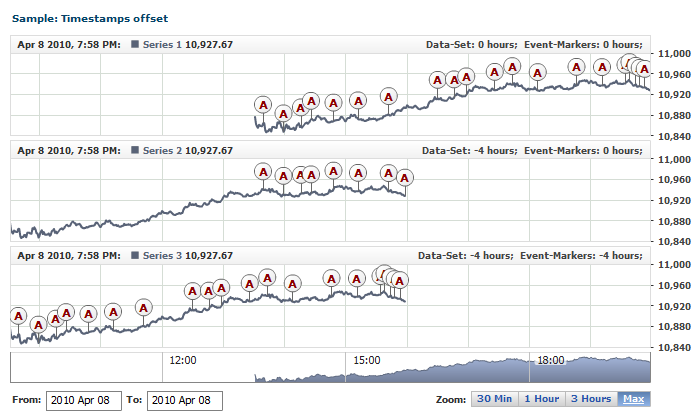

0 μg baseline) reading, the tail was cleaned, and the tail vein was cannulated with a 27-gauge butterfly needle. Following the acquisition of baseline (i.e.
#Labchart reader event markers software
Body temperature was maintained at 37-38 ☌ while heart rate (R-R interval ) was monitored with a three-lead ECG (Lead II) using LabChart 8 Software (ADInstruments, Colorado Springs, CO USA). Rodents were anesthetized with isoflurane (as noted above), maintained at a surgical depth of anesthetic, and placed in a supine position while their thorax was shaved. These care protocols have been described in detail elsewhere (ĮCG assessments were obtained by an individual blinded to the experimental groups pre- (PRE), 1-week (POST) and 5-weeks (TERM) post-surgery. Bladders were manually expressed three to four times each day until spontaneous voiding could be achieved independently (~10 days). For three days post-surgery, the rats were administered enrofloxacin (10 mg/kg, s.c.), buprenorphine (0.02 mg/kg, s.c.), and lactated Ringer's solution.

Rats were weighed and monitored daily for the duration of the study. Animals recovered in a temperature-controlled environment (33 ☌, Animal Intensive Care Unit, HotSpot for Birds, Los Angeles, CA).
#Labchart reader event markers skin
Muscle and skin layers were closed with 4-0 myocryl and 5-0 prolene sutures, respectively. T10 animals had the same procedure as described above except injury was performed at the T10 spinal level. A 400-kDa contusion with a 5-s dwell time was made at T2 using an Infinite Horizon impactor (Precision Systems and Instrumentation, LLC, Fairfax Station, VA). The spinal cord was exposed via the removal of the T2 lamina. After being shaved and cleaned, the skin, fascia, and muscle layers superficial to the C7-T3 vertebrae were incised along the dorsal midline. Buprenorphine (0.02 mg/kg, s.c.), enrofloxacin (10 mg/kg, s.c.) and warmed lactated Ringer's (5 mL, s.c.) were administered prior to surgery. On the day of surgery, rats were anesthetized with isoflurane (5% at induction chamber and maintenance with 2.5%, 1.5–2 L/min oxygen flow). Prophylactic antibiotic treatment with enrofloxacin (Baytril 10 mg/kg, subcutaneous, AVP) was administered for 3 days prior to SCI surgery.

Exercise training did not improve markers of arrhythmia risk at rest, but did ameliorate markers of arrhythmia risk during sympathetic stimulation. Markers of risk for cardiac arrhythmia are increased in experimental SCI, and DOB further increases arrhythmia risk in high-level SCI. Exercise training blunted the exacerbation of markers of arrhythmia risk in the presence of DOB. DOB decreased R-R interval (p < 0.001), and increased markers of risk for ventricular arrhythmia, particularly in high-level (T2) animals (p < 0.05). Baseline markers of arrhythmia risk were increased in both T2 and T10 animals. Known electrocardiographic arrhythmia markers and heart rate variability parameters were evaluated before (PRE), 1-week (POST) and 5-weeks post-SCI (TERM) at baseline and during DOB infusion (30 μg/kg/min). Twenty-one Wistar rats were divided into 3 subgroups: T2-contusive SCI (T2, n = 7), T2-contusive SCI completing passive hindlimb cycling training (PHLC, n = 7), and T10-contusive SCI (T10, n = 7). We aimed to evaluate: (i) whether susceptibility to arrhythmia increases in a rodent-model of SCI (ii) the impact of the sympathomimetic drug dobutamine (DOB) on arrhythmia risk (iii) whether exercise training ameliorates arrhythmia risk. Exercise training is a key component of SCI rehabilitation and management of cardiovascular disease risk, but it is unclear whether exercise training influences susceptibility to cardiac arrhythmia. In individuals with high-level SCI, abnormal sympathovagal balance (such as during autonomic dysreflexia paroxysmal hypertension provoked by sensory stimuli below the injury) is proarrhythmogenic. Injury to descending autonomic (sympathetic) pathways is common after high-level spinal cord injury (SCI) and associated with abnormal blood pressure and heart rate regulation.


 0 kommentar(er)
0 kommentar(er)
